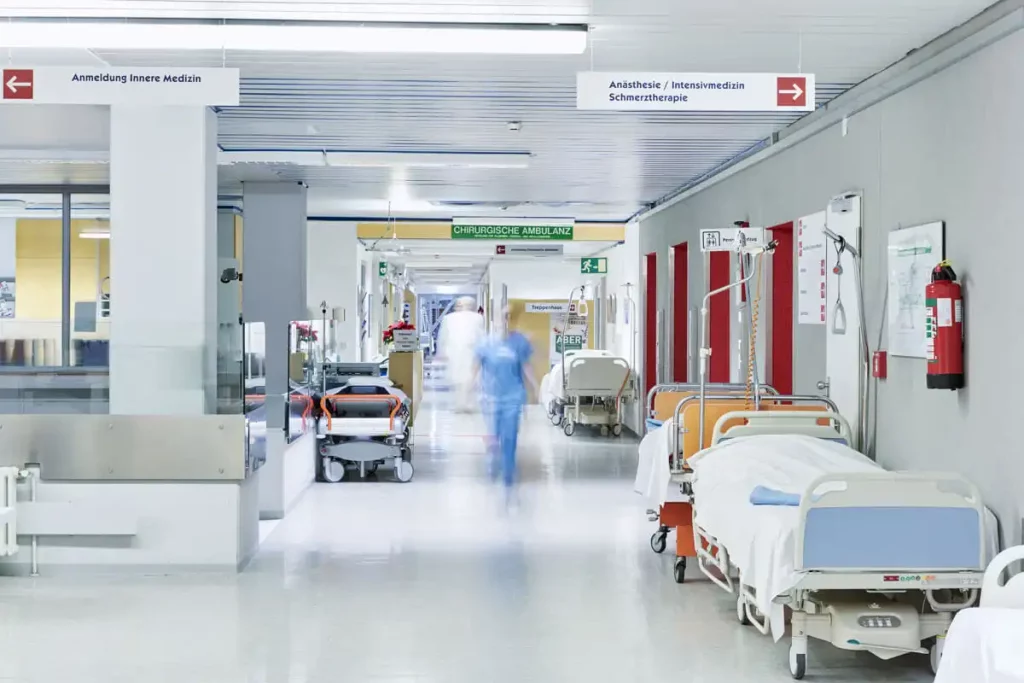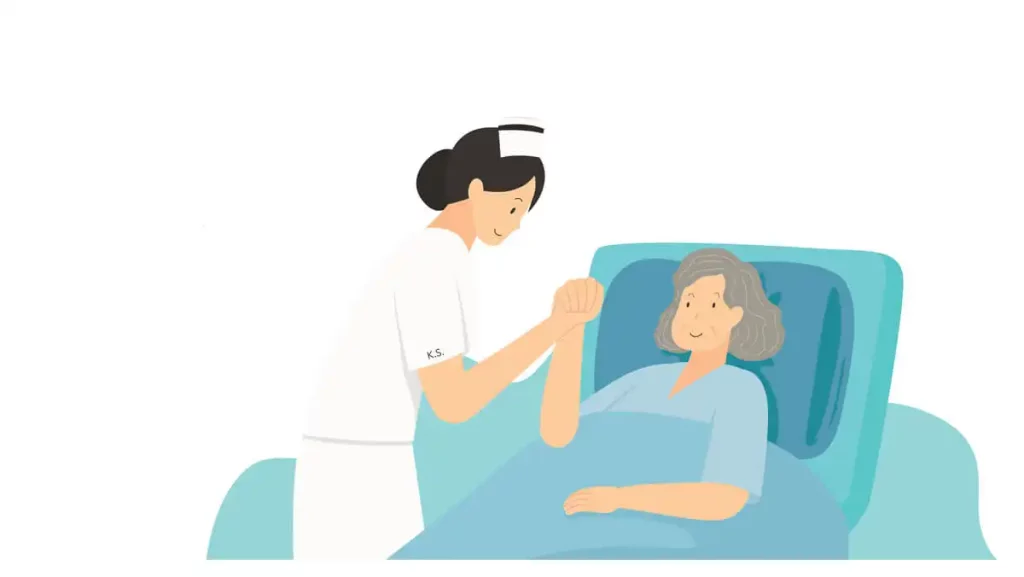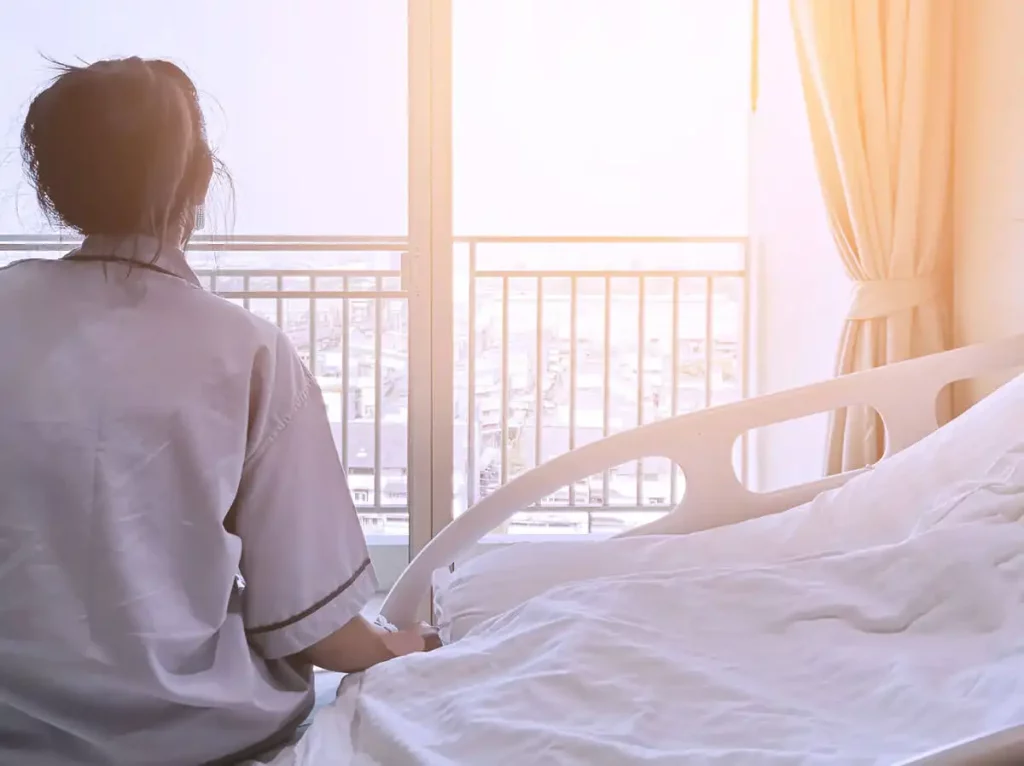Team Viz
Jul 20, 2021
5 min

How medical professionals are putting patients who’ve been thrown into a world of confusion, chaos and medical uncertainty…
Mary was lying in bed in her hospital room. She wasn’t able to speak, to move, to ask for help, to ask anyone what was happening to her. She had suffered a stroke, and she had missed her window for treatment. As this story takes place just shy of two decades ago, nearly all stroke victims then missed their window of opportunity for stroke treatment, simply because it didn’t really exist.
Stroke care has progressed so quickly in recent years with the use of AI powered technology, and if Mary was brought to that hospital now she would have been treated far sooner, her stroke would have been detected earlier, and she would have received lifesaving care that’s becoming more and more accessible all over the world today. She would have had a far better chance of a greatly improved outcome. That’s the new standard of stroke care in 2021, but this story goes back long before today.
The invisible woman
Mary was in her 80’s. She had been independent, active, and she was beautiful. Nurses were coming and going from her room, checking on her constantly. Nobody was talking to her because this little old lady couldn’t move her body, particularly one side of her body, but mostly because she couldn’t speak. They weren’t ignoring her, they just had so many rounds to do and patients to look after that they weren’t entirely conscious of the lady that was lying in that particular bed. These nurses were trained professionals who knew the devastating effects of stroke, who knew that Mary was possibly now disabled, and that she would soon move on to get the after-stroke care that other medical professionals were far more capable of and trained to do. For Mary though, it seemed that none of the nurses recognized the woman that was in there looking out at them, all except for one.
A light that brightens the room
Kate had just started her shift that day, and her first stop was with Mary. She walked in, smiled, said hello, and then picked up Mary’s chart to look it over. Upon seeing what Mary’s condition was from the clipboard she had just placed back in its place, she continued to talk to Mary. She knew Mary probably couldn’t answer, but she knew there was a chance Mary understood.
As Kate went about her bedside duties, she made sure to always stay in Mary’s line of sight so she could see her, so they could see each other. Kate noticed that Mary’s eyes followed her as she gracefully moved about the bed. She kept talking, even though this seemed like a one-way conversation, but deep down inside, Kate could sense it wasn’t. She’d been taught in nursing school to always talk to patients, even those who were unconscious under anesthesia, because studies had shown that people coming out of coma’s have remembered words spoken to them, sometimes verbatim. Mary was awake, her eyes following Kate, so she knew instinctively to keep a conversation going.
“This was no longer my training, this was the real world, and that training that had taught me to talk to Mary had now turned into something real. I spoke to Mary like I was sitting with a friend over coffee”
The nurses who had come before had treated Mary very well. They bathed her, turned her on her side when needed, adjusted the IV drip in her arm, then gently placed her back in a comfortable position and went about their business. Kate was doing this too, but with every turn she explained every move, what she was doing every step of the process. She told Mary who she was, what her name was, told her it was nice to meet her. Mary’s eyes continued to follow her as she moved, spoke, told jokes, and generally tried to make Mary as comfortable as she could.
It’s really nice to meet you
“I’m going to be looking at your IV to make sure everything is OK”, Kate said. It’s at that moment she saw a tear on Mary’s cheek. She saw a second tear, and what she had believed all along, she was now sure of. Mary had shed a tear because she realized that she wasn’t alone, that there was hope, that the fear and worry she had up until that point was beginning to disappear. The fear that she would never be treated the same again as nobody had been speaking to her had gone away. Mary couldn’t say any of this, but Kate knew that’s what the tears streaming down her face meant.
She stayed with Mary for a while, chatting about her day, about some of the other patients she had to go check on, about how meeting and caring for her had been one of the reasons why she wanted to be a nurse. She stayed in Mary’s room a little while longer than usual that day. Throughout her shift she’d pop her head back in the door to say hello, to let her know she was still there, to let her know she was keeping an eye on her patient to make sure all the other nurses were being nice to her too.
Sometimes people leave, but they’re never really far away
Even though it wasn’t her first scheduled stop, when Kate came back to work the following day she went straight to Mary’s room to say hello, to tell her about her night, to see if there was anything she could do for her that morning. The bed was freshly made, the room clean, and Mary was gone. Kate sat on the end of the bed and thought about Mary, a tear now slowly falling down her face. She thought about a lot of things. She forgot where she was for a brief moment, and she wondered where Mary was now.
She walked to the nurse’s station and headed straight to the basket that held all the patient charts and medical records hoping to find Mary’s in there. She did, and she saw that Mary had been discharged to a nearby nursing home. She placed the chart back in the basket and she smiled. It was the little things that had changed Mary’s life, if only for a few moments in that hospital room the night before, but little did Mary know, she had changed Kate’s life forever too.
An everlasting light
She never saw her again, but Mary would never leave her. She’s carried her on her journey ever since. She’s never forgotten that night, and looking back years later she realizes that was the moment healthcare changed forever for her. From that moment on, Kate became more and more passionate about stroke patients. She started volunteering with organizations whose goal was to improve the lives of disabled people, especially those afflicted by the devastating effects of stroke. She lobbied to get her hospital stroke certified, which she saw became a reality. She had decided early on to dedicate her life to the care of others, and now she had a clear path to how she could help those most in need.
A new beginning
Kate had started off as a bedside nurse making $15.30 an hour, and today holds the position of the highest level of neuroscience hospital administrator practicing today in one of the largest, most progressive healthcare systems in the United States. She has helped countless amounts of patients over the years, and continues to do so, all with the same care, attention and love she had shown Mary.
Whenever she meets a new patient, she remembers Mary, and she treats every one of those patients with that same dignity and respect she had shown her. She remembers the room Mary was in, she remembers what her skin felt like when she held her hand, and she always remembers that the smallest things are sometimes the things that make the biggest difference. Those little things can sometimes change the life of a person someone is helping, but in rare moments, they can also change the life of the person themselves.
“Once upon a time I wanted to know what love was. Love is there if you want it to be. You just have to see that it’s wrapped in beauty and hidden away between the seconds of your life. If you don’t stop for a minute, you might miss it” Anonymous


